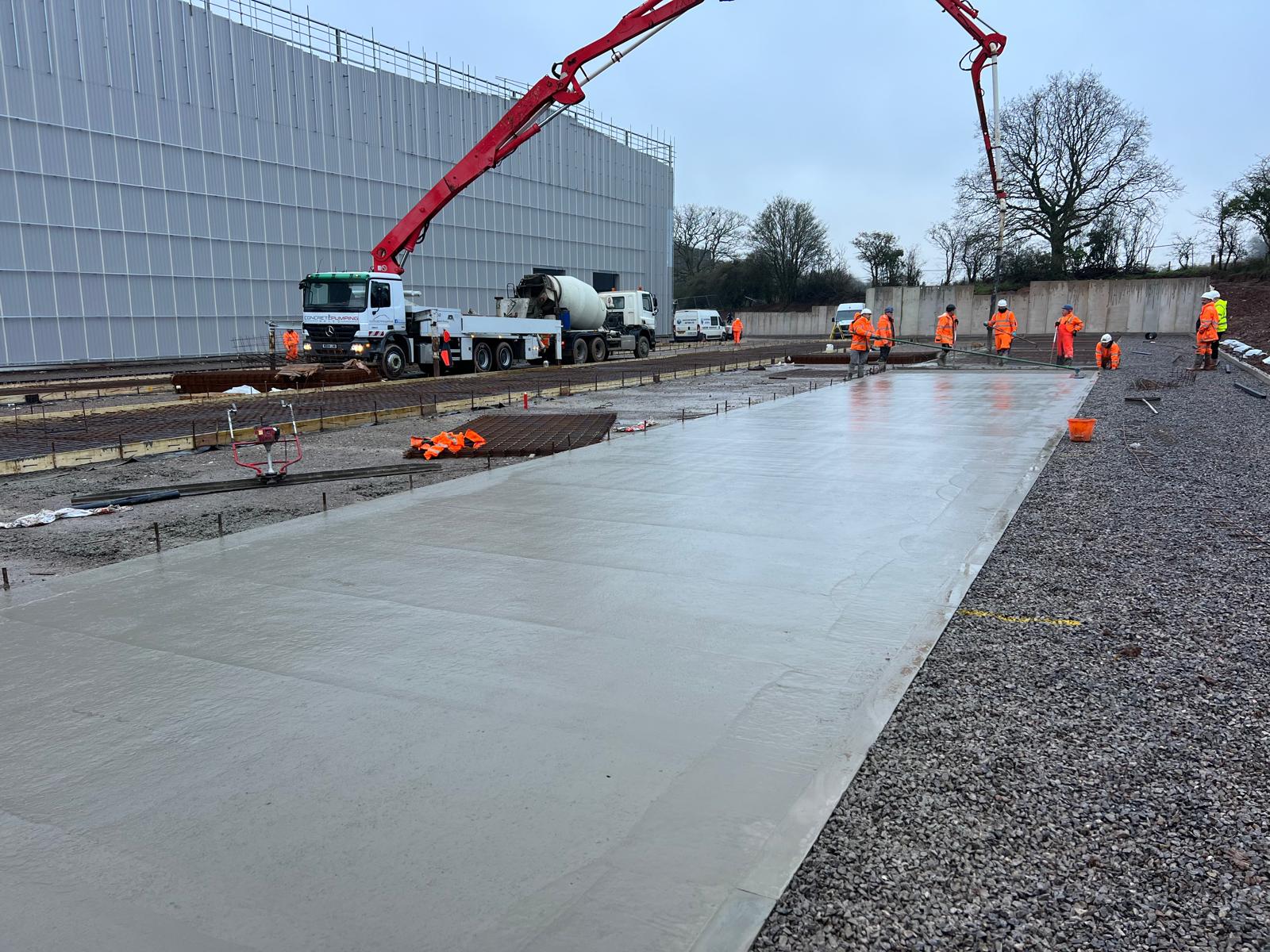Safety Netting Solutions for Construction Sites — Why Compliance Matters
In the fast-paced world of construction, safety netting isn’t just a precaution — it’s a legal and moral responsibility. Protecting workers from falls and preventing debris from endangering others below are essential parts of modern site safety.
At ConcreteSF, we supply and install construction safety netting across the UK, adhering to the best practice principles of FASET safety netting guidelines — even when full certification isn’t required. Our goal is simple: to create safer, more compliant worksites that protect both people and property.
Understanding Construction Safety Netting
Construction safety netting is designed to catch falls or intercept debris during building, maintenance, or refurbishment work at height. It forms a vital layer of protection beneath elevated working areas, ensuring compliance with UK Health and Safety Executive (HSE) requirements.
Two main types of safety netting are commonly used on UK construction sites:
- Fall Arrest Safety Nets — Designed to safely arrest a worker’s fall, reducing the risk of serious injury.
- Debris Netting — Installed beneath or over scaffolding to prevent falling materials, tools, or debris from reaching the ground or public areas.
These systems play an integral role in protecting both operatives and the public — and when combined with trained installation, they deliver the confidence that every project meets the highest safety standards.
Why FASET Safety Netting Guidelines Matter
FASET (Fall Arrest Safety Equipment Training) is the UK’s governing body for temporary safety systems used in construction. Their guidelines set the benchmark for best practice in netting design, installation, inspection, and maintenance.
Even for companies not formally FASET-approved, adhering to FASET principles demonstrates professionalism, accountability, and a proactive approach to risk reduction.
ConcreteSF’s installations follow these essential guidelines:
- Safety nets conform to BS EN 1263-1 and BS EN 1263-2 standards.
- Nets are inspected regularly for wear, UV damage, and secure anchorage.
- Rigging is carried out by trained and competent installers.
- Debris containment is verified before work proceeds beneath active zones.
By following FASET guidance, ConcreteSF ensures that every netting project aligns with the same safety expectations as fully accredited providers, protecting your workforce and satisfying site auditors or principal contractors.
The Benefits of Professional Safety Netting
- Enhanced Worker Protection
Safety nets significantly reduce the risk of injury from falls — a leading cause of accidents on UK sites. - Regulatory Compliance
Working in line with FASET and HSE standards demonstrates due diligence, ensuring compliance with the Work at Height Regulations 2005. - Improved Site Efficiency
Fall arrest nets allow greater freedom of movement for operatives compared to rigid scaffolding systems, increasing productivity without compromising safety. - Debris Control
Debris netting maintains clean, safe work zones — preventing dropped materials from damaging property or endangering workers below. - Peace of Mind
A correctly installed safety netting system offers site managers and contractors reassurance that their project meets professional safety expectations.
ConcreteSF’s Commitment to Safety
While ConcreteSF may not hold direct FASET certification, our teams are trained to FASET standards, ensuring every installation is compliant with the latest UK safety legislation.
We use only BS-approved netting materials and employ expert riggers experienced in working on complex structural sites.
Every project is delivered with a focus on:
- Full site risk assessment and method statement (RAMS)
- Rigging and anchoring to engineered fixings
- Visual inspections before and after installation
- Integration with other safety systems (scaffolds, edge protection, etc.)
This approach ensures that your project is fully aligned with UK best practice — safeguarding people, assets, and reputation.
Choosing the Right Safety Netting Partner
When selecting a safety netting contractor, consider the following:
- Are their systems BS EN-tested?
- Do they follow FASET installation and inspection procedures?
- Can they provide documentation, RAMS, and compliance evidence?
- Do they have experience on similar site types (industrial, residential, commercial)?
At ConcreteSF, the answer is yes to all the above — we deliver fully compliant, high-quality installations across the UK.
Call to Action
If you’re looking for a reliable partner for construction safety netting in the UK, contact ConcreteSF today. Our expert team provides full fall arrest and debris netting solutions tailored to your site’s needs — installed to meet or exceed FASET safety netting guidelines.
📞 Visit www.concretesf.co.uk or contact our safety team to discuss your requirements.
Frequently Asked Questions (FAQs)
1. What is FASET and why is it important?
FASET is the UK trade association for fall arrest safety equipment. Their standards define how safety nets should be tested, installed, and inspected — ensuring consistency and reliability across the construction industry.
2. Do I need FASET certification to install safety nets?
Not necessarily, but installations must still follow FASET guidelines and BS EN 1263 standards. ConcreteSF follows these best practices, ensuring every system is safe and compliant.
3. What types of safety netting does ConcreteSF provide?
We install both fall arrest safety nets and debris netting, depending on the project type. Each system is tailored to suit the structure, environment, and height safety requirements.
4. How often should safety nets be inspected?
Safety nets should be inspected before every use and formally checked every 12 months by a competent person, in line with BS EN 1263-1 and 1263-2.
5. How does safety netting improve site productivity?
Unlike rigid barriers, safety nets allow workers to move freely under safe conditions. This improves workflow efficiency, reduces downtime, and ensures projects progress safely and on schedule.
More like this
Find more posts like this from the CSF team.



